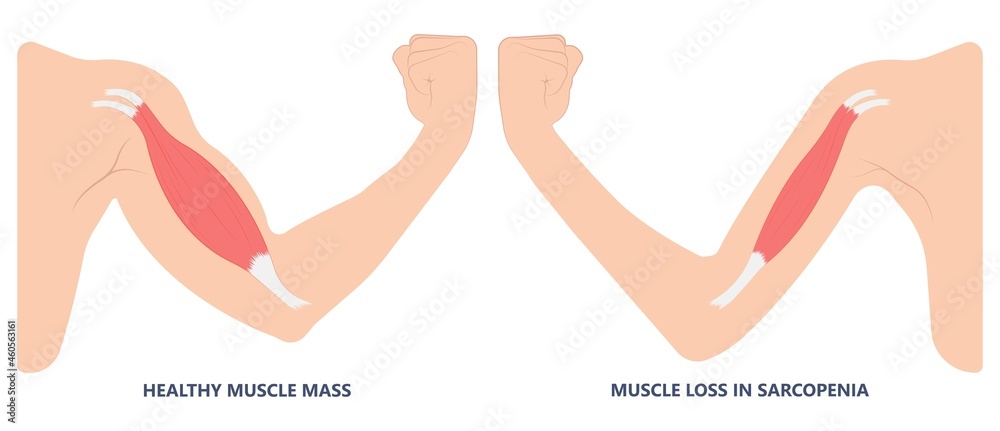Despite Prehistoric-Sounding Names, the 2 Age-Related Processes are Real Concerns Today
About Scott V Watkins, MD
They may sound like terms from the dinosaur age, but dynapenia and sarcopenia are thoroughly modern phenomena.
Both are muscle-related conditions directly related to aging. But thanks to the explosion in research, knowledge, and treatment in the world of Functional Medicine over the last three decades, we can alter the course of events for a healthier and more productive life.
You only need to do a simple Google search to learn how focused modern medicine is on unraveling the best ways to approach dynapenia and sarcopenia.
Dynapenia is defined as age-related loss of muscle strength not caused by a neurologic or muscular disorder; sarcopenia is the gradual loss of muscle tissue, strength, and function. While these definitions indicate dynapenia and sarcopenia are normal and unavoidable parts of getting older, ramped-up research has found “normal” and “unavoidable” are not necessarily set in stone, given the power of dietary and modifiable lifestyle changes.
How do we know if sarcopenia and dynapenia are affecting us? Here’s the type of testing you can expect:
Sarcopenia can be easily quantified by body bioelectrical impedance analysis (BIA), involving body composition testing equipment, using a weak electric current that flows through the body. BIA measures muscle, fat, bone, and water distribution throughout the body.
Diagnosing dynapenia involves measuring hand-grip strength. Several simple testing devices can be used to determine the condition, which has been widely studied. The European Working Group on Sarcopenia in Older People (EWGSOP2) has classified dynapenia as hand-grip strength of less than 27 kg for men and less than 16 kg for women.
A study published in the December 2022 issue of the Sports Medicine and Health Science Journal evaluated the role of dynapenia and sedentary behavior in relation to all-cause mortality.
As expected, the study participants with the lowest muscle strength and the highest sedentary behavior had the highest mortality rates. Both dynapenia and sedentary behavior (SB) were statistically associated with higher all-cause mortality, and the combination of these two risk factors was even worse. The combined risks transcended even socio-demographic factors such as age, gender, ethnicity, education, and income levels, which often play a role in the type of lifestyle habits that a person adopts. Three hundred and twenty-two (322) individuals age 60 and older were studied. Fifty-five (55), or 17.1 percent, died within a four-year period (49.7 months). Of those who died, 43.6 percent had dynapenia and 76.4 percent had high SB.
The evaluation of sedentary behavior is somewhat complicated, but just five hours or more per day of SB (such as watching television) is enough to increase all-cause mortality, according to this study in the International Journal of Behavioral Nutrition and Physical Activity.
The study subjects with the highest mortality rate had eight to 12 hours of SB daily.
Modifiable changes in lifestyle will help reduce the impact of both dynapenia and SB. Increased physical activity with a goal of 150 minutes per week and a healthier diet will maintain muscle mass and strength, leading to a better quality of life.
To read more about how to gain that edge in preventing age-related muscle issues, read other articles in our Learning Centre. These two focus on healthy living and physical activity: More Small Steps to a Healthy You and No Time to Exercise? Here Are 4 Ways To Fit It Into Your Day.













